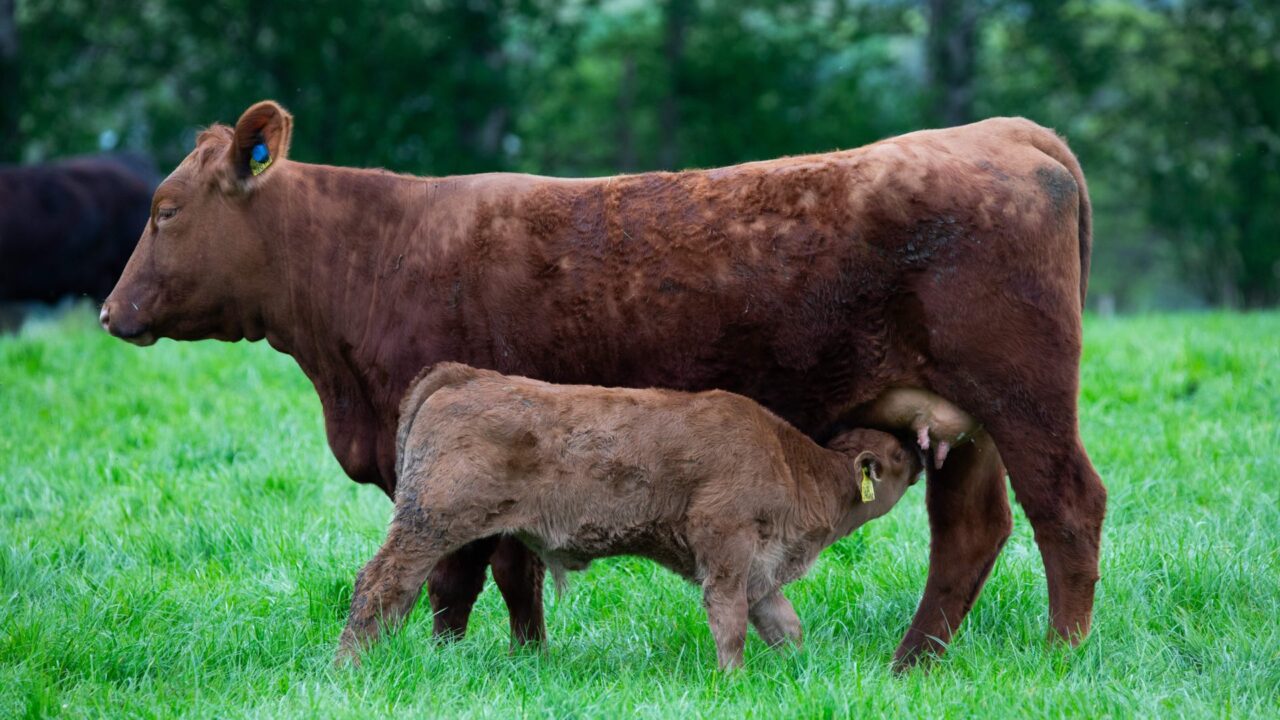Autumn calving may already have kicked off on some farms, but preparation will now be well underway for herds calving from late September onwards.
Three key areas to monitor in cows ahead of calving this autumn are: body condition; mineral supplementation; and risk of infection, according to College of Agriculture, Food and Rural Enterprise (CAFRE) beef and sheep advisor Jonathan Brown.
The CAFRE adviser recently emphasised the importance of monitoring cow body condition score (BCS) in the lead-up to calving.
He said: “Grass growth in many regions this season has exceeded the long-term average, so it’s vital that farmers keep a close eye on cow condition.
“Aim for a BCS (body condition score) of ‘3’ at calving. Cows above ‘3.5’ are at risk of calving difficulties due to excess fat around the pelvic canal, while cows below ‘3’ may struggle with colostrum production and delayed cycling.”
Brown suggested using cow condition to guide grazing strategies.
He said: “If cows are above BCS ‘3’, they can be used to clean up poorer quality swards.
“For thinner cows, offer better grass or consider concentrates – but avoid major diet changes in the final weeks of pregnancy, as this can affect calf size more than cow condition.
“Fly pressure is another seasonal challenge.,” he added and advised farmers to watch out for signs of summer mastitis.
He suggested that farmers should consider garlic licks, fly repellents, or Stockholm tar on teats to reduce the risk of infection.
To avoid unnecessary spending on mineral supplements, the CAFRE adviser suggested blood sampling cows throughout the year.
Brown advised farmers that where mineral supplementation is needed, ensure they include:
- Copper (for immune function);
- Iodine (to balance thyroid and metabolic activity);
- Selenium (for muscle growth, development and maintenance);
- Cobalt (for vitamin B12 synthesis).
“Lick buckets are handy, but slow-release boluses offer a more consistent supply over a 4-5 month period,” he said.
Calving
As calving due dates approach, moving cows to easily-monitored fields near handling facilities can make life easier.
“Look out for signs like separation from the group, milk let-down, and a swollen vulva, these are indicators that calving is near,” Brown said.
Having clean, functional calving facilities on hand is also important to reduce risk of infection if assistance is required at calving.
“Now is the time to check your calving gate, ropes, and aids,” the CAFRE adviser said.
“Having the right equipment ready could be the difference between a live or dead calf.
“If intervention is needed and no progress is seen within two hours of the water bag appearing, don’t hesitate to call your vet, especially if the calf is mispresented.”
Brown urged farmers to keep safety in mind at all times.
“Cow behaviour can be unpredictable during calving,” he stressed.
As autumn calving moves indoors, the CAFRE adviser urged farmers to prepare housing early.
“Make sure you’ve got straw, disinfectant, gloves, and lubricant gel on hand. It’ll save stress later.”
Post-calving, he said that monitoring for milk fever and grass tetany is advisable and magnesium boluses and lick buckets can help reduce the risk of tetany.
Calcium and magnesium bottles should be in stock, ready to use if needed.
Once cows have calves, it is important to ensure calves have got colostrum.
“Make sure they’ve bonded, the cow has cleansed, and there are no issues that could affect future fertility,” Brown said.

